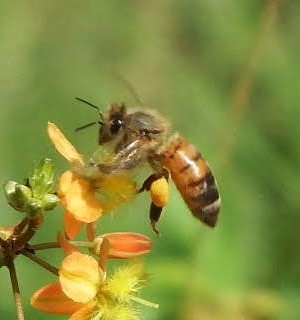You can help bees in so many ways! A great way is to attend one of my workshops/classes – you’ll learn a LOT about honey bees in general AND the incredible, edible world of honey. Visit my “Events” page to see where my next event is. https://weloveourbees.com/events-calendar/
1) GO…. AND GET YOUR GARDEN HABITAT CERTIFIED!!
NATIONAL WILDLIFE FEDERATION – certify your habitat here https://www.nwf.org/garden
FANTASTIC WEBSITE – great resource!!!!
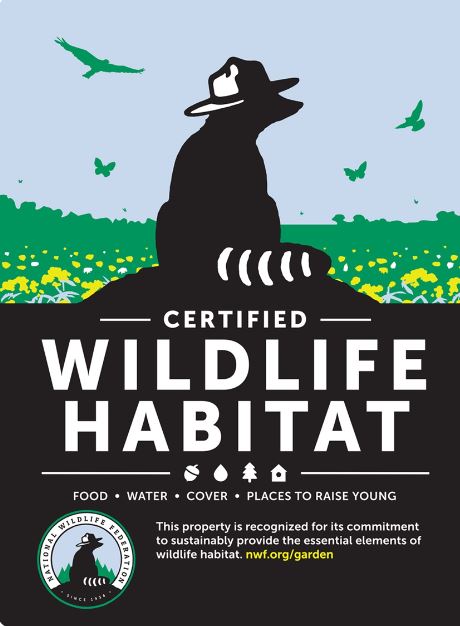
2) GO…. WILD
Dedicate an area in your garden to letting it grow wild – just wild clover! The bees absolutely LOVE it – doesn’t have to be a large area – even a really small area like mine! Anything you can do will be appreciated by bees, butterflies and other pollinator insects. Call it a mini pollinator garden!!!
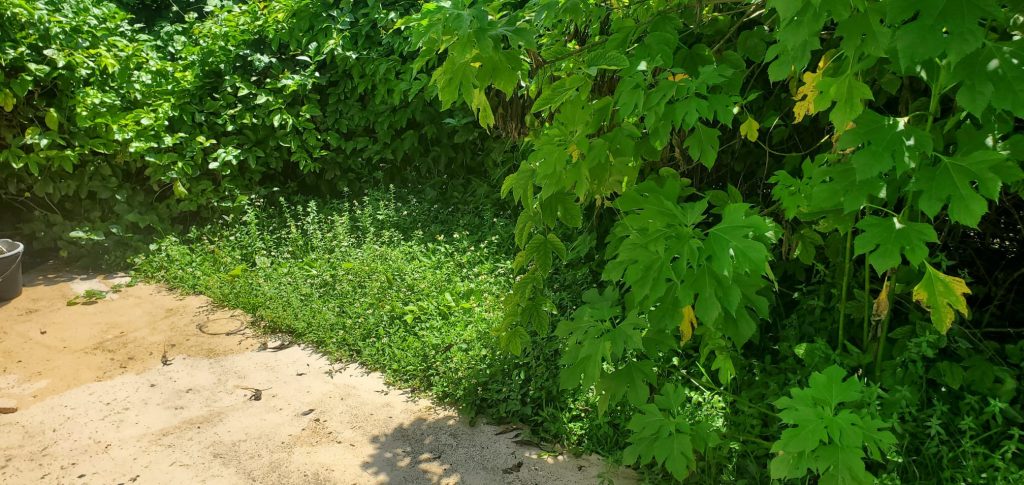

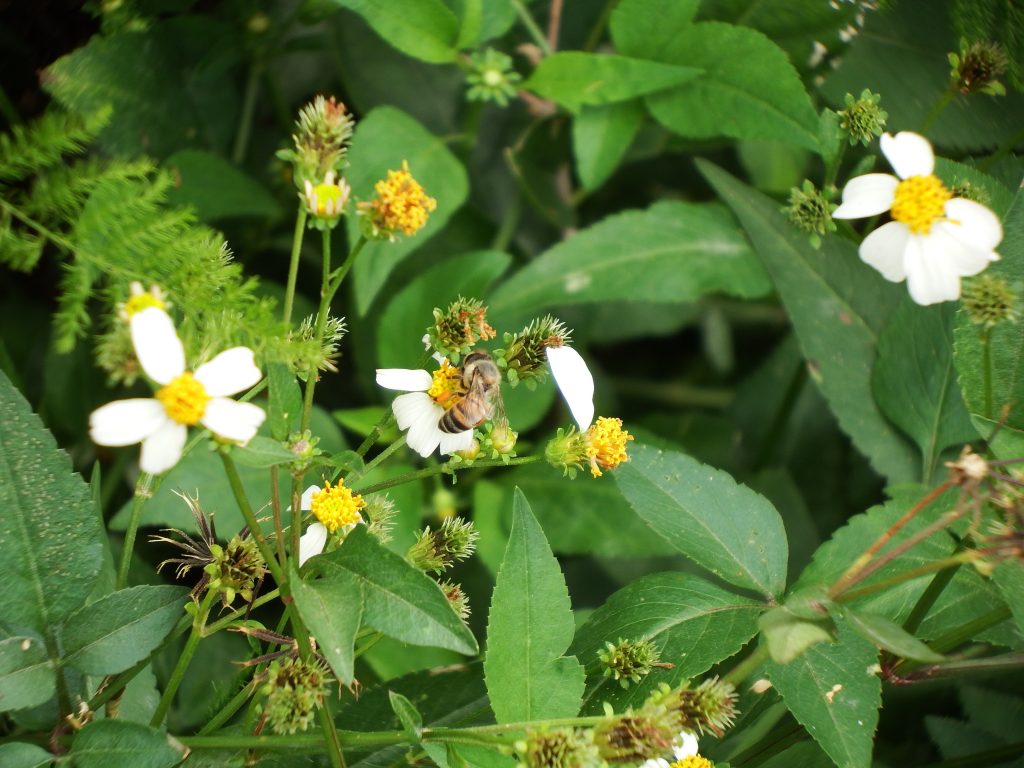
3) GO…. PUT AN END TO REGULAR MOWING. Believe it or not, just cutting down on mowing every week or two (no pun intended) will help the bees – let your entire garden grow a little wild for a few weeks and see how many bees visit! Especially helpful in early spring when the bees are swarming and desperate to build up honey stores.
4) GO…. HELP A TIRED BEE. What do you do if you see a tired bee on the sidewalk or somewhere on the ground? MIX WHITE SUGAR 1:1 RATIO AND PUT A DROP NEAR HER TO GIVE HER ENERGY. DON’T GIVE HER HONEY UNLESS YOUR HONEY IS FROM A TRUSTED LOCAL SOURCE, RAW AND COMPLETELY UNTREATED. Don’t put a lot of honey down – that can attract a bee feeding frenzy, you just want to give her a tiny drop to give her energy to fly home. I’m lucky enough to have lots of raw honey from my own bee hives, so I’m able to give this tired beauty an energy boost using raw honey! She gobbled it up and then flew on home.
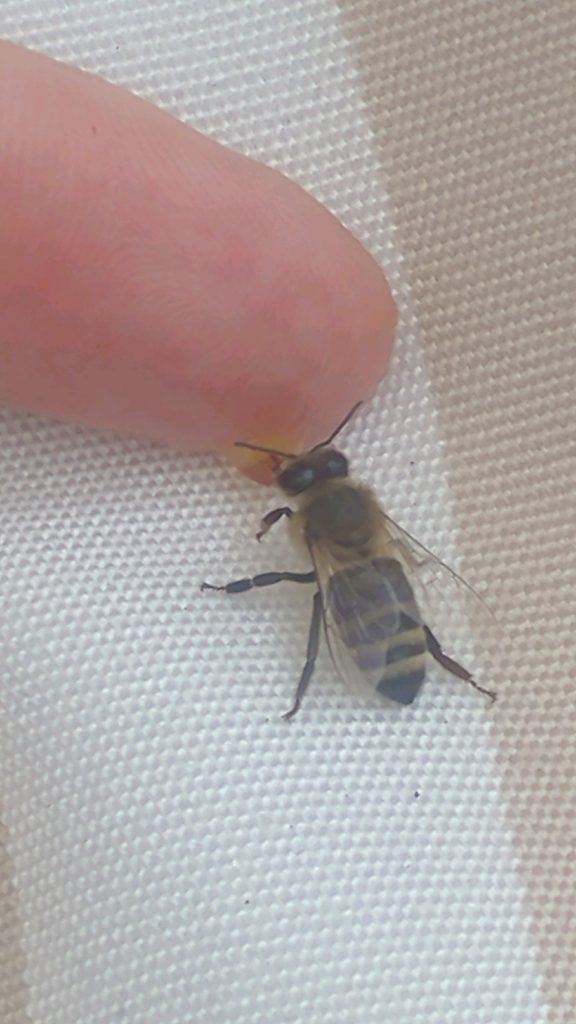
What is even BETTER and a lot more convenient is to purchase a BEE REVIVAL KIT!!! $25 each plus shipping – I accept Zelle and Venmo so contact me if you’re interested – it’s a tiny vial filled with sugar water that you carry on your key chain, so if you see a tired bee, you can open it up and offer her some sugar water. The amazing company Beevive in the UK makes these and they’re good for bumble bees and butterflies too!!! Unfortunately a lot of other companies have jumped on the bandwagon and make their own cheaper versions, which I will not promote because I do not know the quality of their sugar water. Beevive has my unconditional support – check out their website too https://beevive.com/en-us
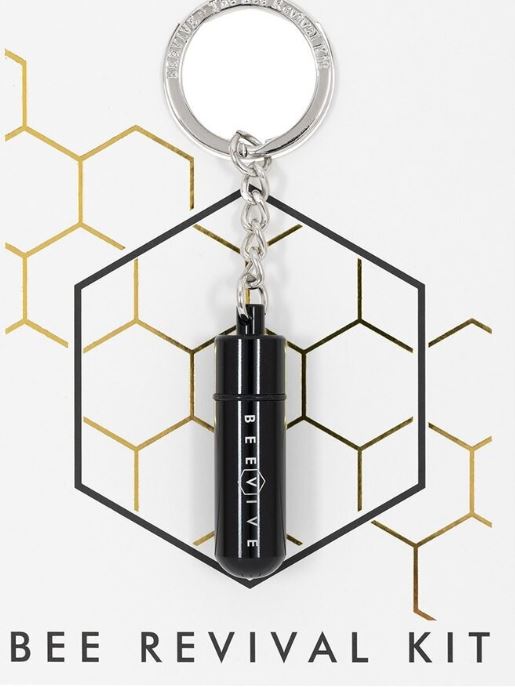
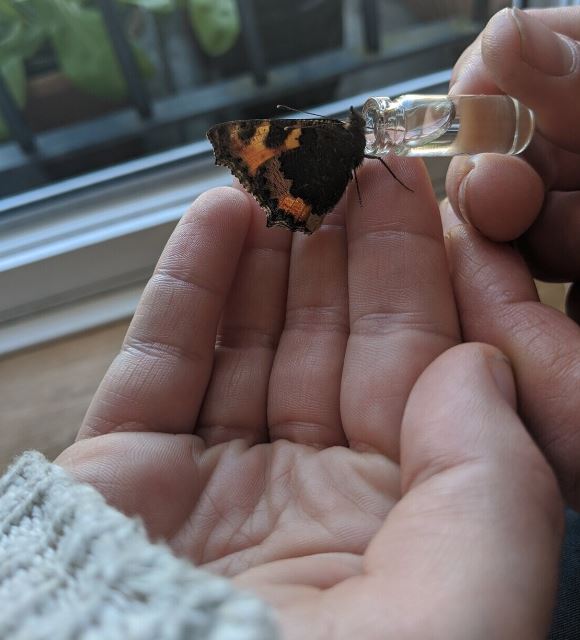
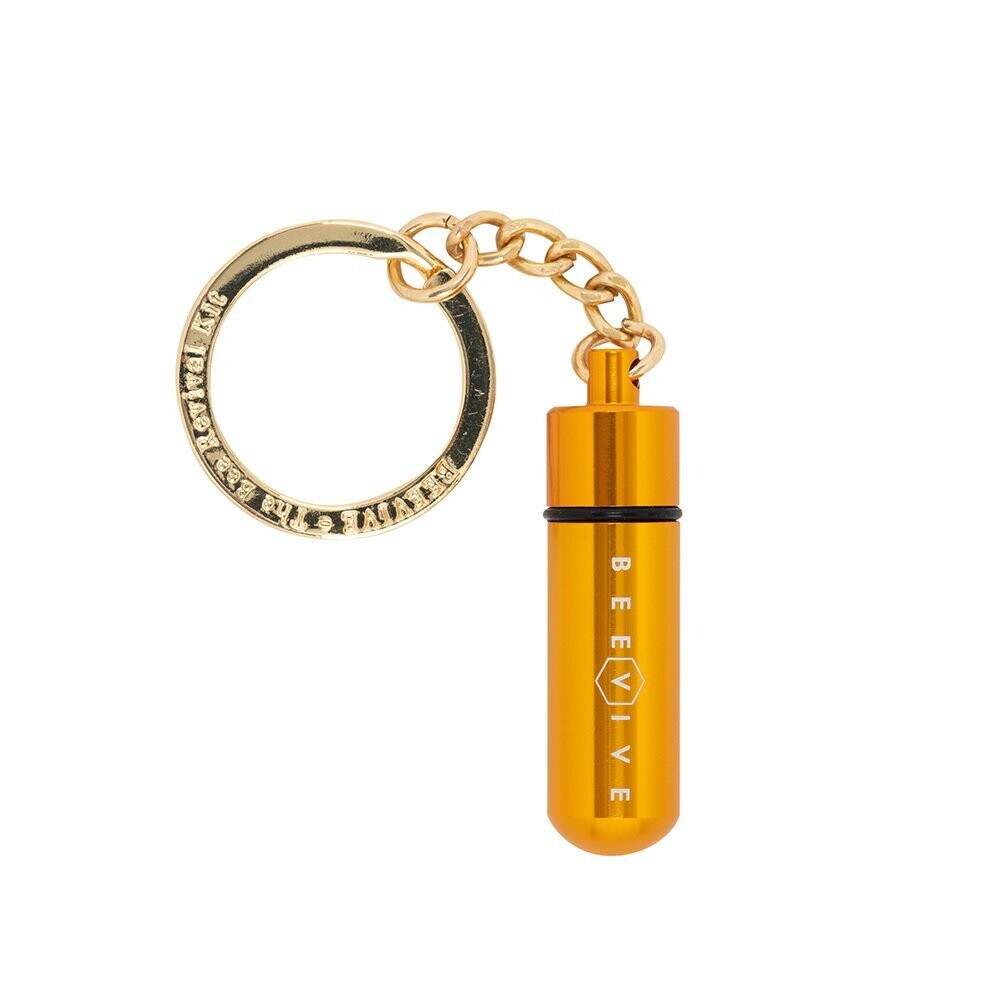
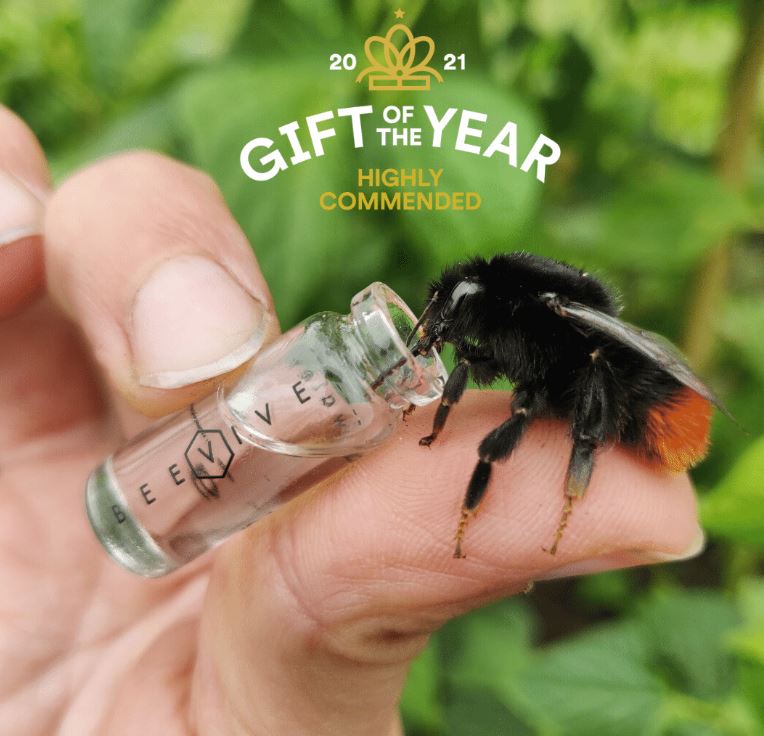
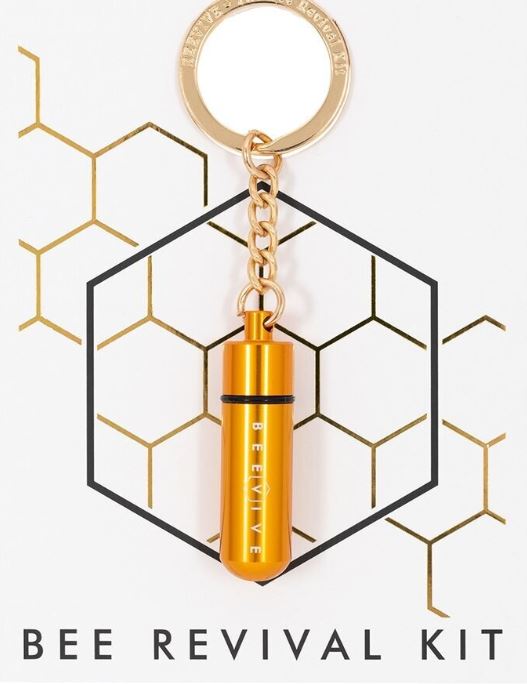
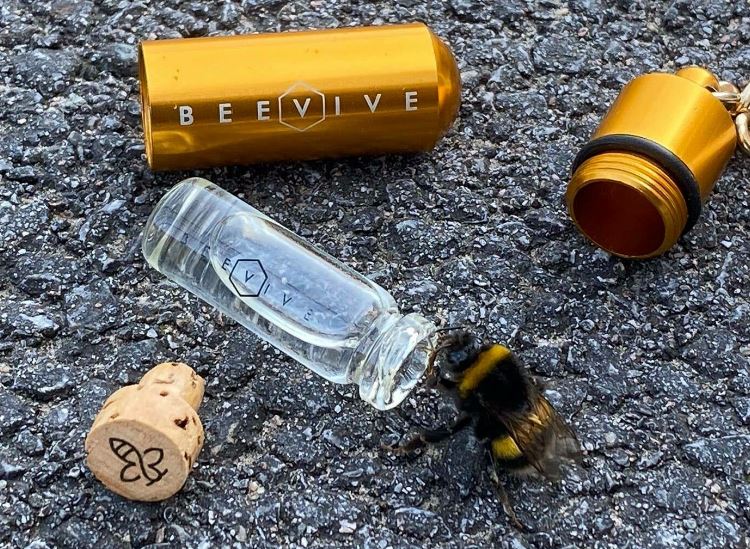
AND WHAT IF YOU SEE A BEE STRUGGLING IN YOUR POOL? WHAT TO DO THEN? USE A SCOOP OR LEAF TO LIFT HER OUT. Don’t use your hands – in her confusion and exhaustion, she may feel threatened and try to sting you, so always use something to lift her out.
5) GO…. ENCOURAGE LIVE REMOVALS instead of exterminations. I highly recommend Brian Schafer – I work closely with him, he helps me with my bees, is an amazing resource and is trained in all kinds of bee removals.
BRIAN SCHAFER
Cell: (954) 6 1 2 -3 6 6 2 or EMAIL: BrianSchafer1@aol.com
Brian is truly a bee hero and a truly exceptional bee removal expert. In my opinion, there is nobody better!
6) GO PLANT A BEE GARDEN
MOST IMPORTANT: TRY TO GET PLANTS THAT FLOWER AT DIFFERENT TIMES THROUGHOUT THE YEAR SO BEES ALWAYS HAVE OPTIONS. MOST IMPORTANT: TRY TO GET PLANTS THAT FLOWER AT DIFFERENT TIMES SO BEES ALWAYS HAVE OPTIONS AND PROVIDE TREES FOR BEES – Did you know that bees get most of their nectar from trees? With deforestation and development it’s getting harder and harder for them. When a tree blooms, it provides hundreds — if not thousands — of blossoms to feed from. Trees are not only a great food source for bees, but also an essential habitat. Tree leaves and resin provide nesting material for bees, while natural wood cavities make excellent shelters. Visit my page https://weloveourbees.com/create-a-pollinator-garden/.
Choose a NO SPRAY NURSERY to buy your blooms (like Jesse Durko) – CALL AND ASK THEM BEFORE YOU PURCHASE! You don’t need a ton of space to grow bee-friendly plants — gardens can be established across yards and in window boxes, flower pots, and planters. If they do spray, then go somewhere else. You don’t want toxic flowers in your garden, poisoning the bees and butterflies).
How do you know which flowers to get? EASY! Go see where the bees and butterflies are hanging out! It’s like if you had a choice between 4 or 5 restaurants – you see that all of them are completely empty except one – and that one is crowded – so you know WOW, THAT’s the place to go for dinner! Same with bees – if they’re digging a certain flower or tree – get it! But go every two or three months so you get flowers that bloom year round.
I get my plants from Jesse Durko Nursery – they’re not the cheapest but they have assured me they are a NO SPRAY nursery.
https://www.facebook.com/JesseDurkosNursery/
7) GO…. ….PLANT A TREE:
Did you know that bees get most of their nectar from trees? With deforestation and development, trees that bees need are disappearing from the planet. When a tree blooms, it provides hundreds — if not thousands — of blossoms to feed from. Trees are not only a great food source for bees, but also an essential habitat. Tree leaves and resin provide nesting material for bees, while natural wood cavities make excellent shelters.
**MOST IMPORTANT**
8) GO…. …..GO CHEMICAL FREE
This is the BIGGEST help for the bees.
Pesticides, fertilizers, herbicides, and neonicotinoids are harmful to bees – and they get into your soil, into the water table and affect everything, including butterflies, bees, insects, mammals etc. So PLEASE PLEASE PLEASE avoid treating your garden and green spaces with synthetics. ALL YOUR LAWN NEEDS IS WATER! Avoid treating your garden and green spaces with synthetics. Instead, use organic products or granules on your lawn if you have to for weeds – but bear in mind, bees love clover, so you’re often killing one of their favorite food sources – mention thousands of dead bees by the hive – due to some chemical spraying. We stopped treating our lawns about 6 years ago – all we do is water them – not a single chemical goes anywhere in our garden – we are completely chemical free – and our lawn has NEVER looked better!!!!!
If you feel you HAVE to treat your lawn, use organic products or granules on your lawn for weeds – but bear in mind, bees love clover (weeds), so you’re often killing one of their favorite food sources. Even exterminators like Terminex, if they’re spraying outside, that spray can carry in the wind and coat valuable flowers and weeds and inadvertently cause damage to the bees food supply. By using granules, you’ll prevent the mist from toxic chemicals drifting on the wind.
CHEMICALS TO BE AWARE OF: Below this article is more valuable information about the terrible effects of chemicals, specifically Glyphosate – this information was provided to me by Samuel Levin | Outreach Coordinator of Drugwatch.com (thank you).
Glyphosate, the active ingredient in Roundup, is one of the most commonly used herbicides in the world by commercial gardeners. However, many pesticides – including insecticides, fungicides, and herbicides – harm pollinators and other beneficial insects.
To help educate those in the farming and gardening industries about this toxic chemical, we’ve created a comprehensive guide with organic, and homemade; and a second guide with agricultural alternatives. please take a look:
https://www.drugwatch.com/roundup/glyphosate/
https://www.drugwatch.com/roundup/cancer/
VERY HELPFUL AND DARE I SAY ABSOLUTELY CRITICAL AND URGENT/ESSENTIAL INFORMATION FOR US TO BE AWARE OF.
WHAT ELSE CAN YOU DO TO HELP BEES? As you may know, most Roundup can pose a risk to humans and animals as there is a link between exposure and cancer. Risks associated with Roundup use are tied to its active ingredient, glyphosate. The EPA classifies Roundup as “safe for use,” but the International Agency for Cancer Research, an arm of The World Health Agency, classifies glyphosate as a “probable human carcinogen.” For this reason, a Community Outreach Coordinator at CONSUMER NOTICE sent me this information – THANK YOU Jazmin, for looking out for our tiny friends. They published a guide on the safety of Roundup.
https://www.consumernotice.org/environmental/pesticides/roundup/safety/
9) GO…. MAKE A BEE BATH!
BEES NEED WATER!!! Not just to drink, but to keep the hive cool (they keep the hive at a constant 94 – 97 degrees, and use water to spread around the hive and fan with their wings, creating a cool air flow, especially to keep the brood nice and cool. HELP THEM GET WATER! make sure you have marbles, fronds, or pebbles so that if a bee falls in, she won’t drown. Refresh the water regularly.
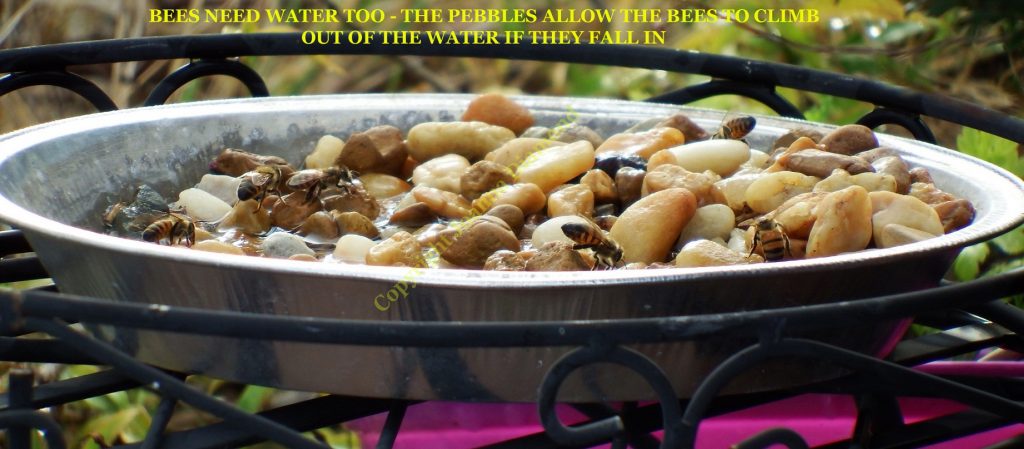
I recently discovered BEE FLOATS AND BEE LADDERS!!!!! These are great!!! I sell both!
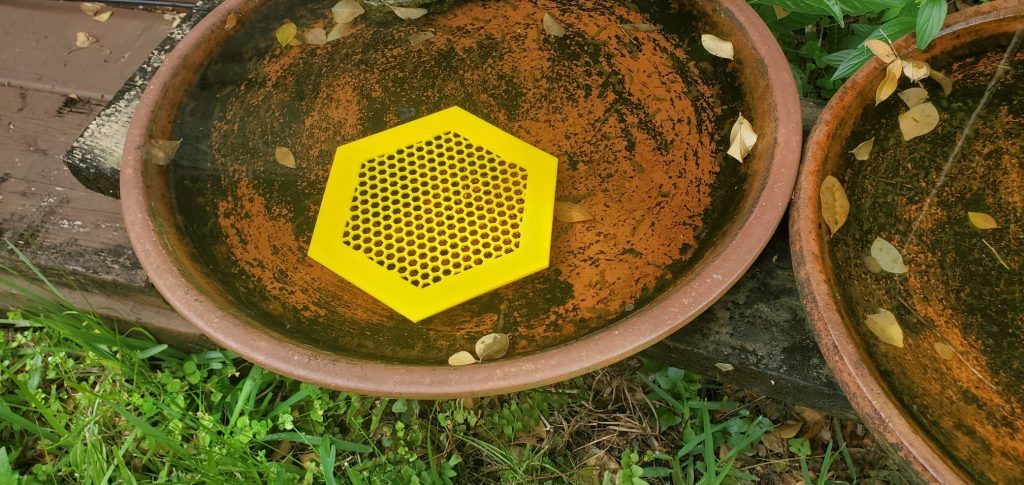
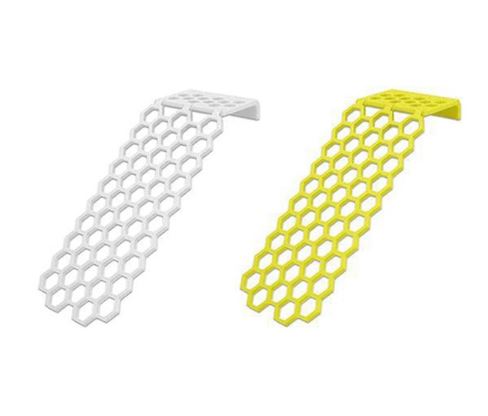
10) GO…. DONATE. Want to help your local beekeeper or bee removal person? Consider a gift card to either South Florida Bee Supplies, or Mann Lake, or Dadant! (highly reputable bee supplies and equipment stores) – if you’re interested in buying a gift card for a bee removal person, let me know! Providing bee equipment will allow people (like Brian) to do bee rescues in low income housing situations, or when bees are living in abandoned buildings that are about to be demolished, or critical situations. Sadly a lot of people are living on the poverty line and genuinely can’t afford to pay anything for a bee removal – so if you donate towards equipment, Brian can donate his time and everybody wins, especially the bees. Our main priority is to save the bees, so if the home owner can’t afford it, or if there is nobody there to sanction the removal but we need to save the bees anyway, I want to try to help get the equipment for Brian that he needs. Let me know if you’re interested in donating towards bee equipment! I LOVE South Florida Bee Supplies, https://www.sflbeesupplies.com/ and they have a section where you can purchase a gift card to buy bee equipment. You can make the giftcard out to my email address weloveourbees@gmail.com and I will make sure he gets it!
11) GO…. BUY AN ORCHID BEE FEEDER!!!! Visit my page on Orchid Bees and let me know if you want to purchase one – available exclusively from me! You will love these shy, gentle, sweet little bees that gather around my Orchid Bee Feeders to gather clove oil (the males rub it on their legs to attract the ladies.) https://weloveourbees.com/orchid-bees/ – limited stock left, so contact me as soon as possible.
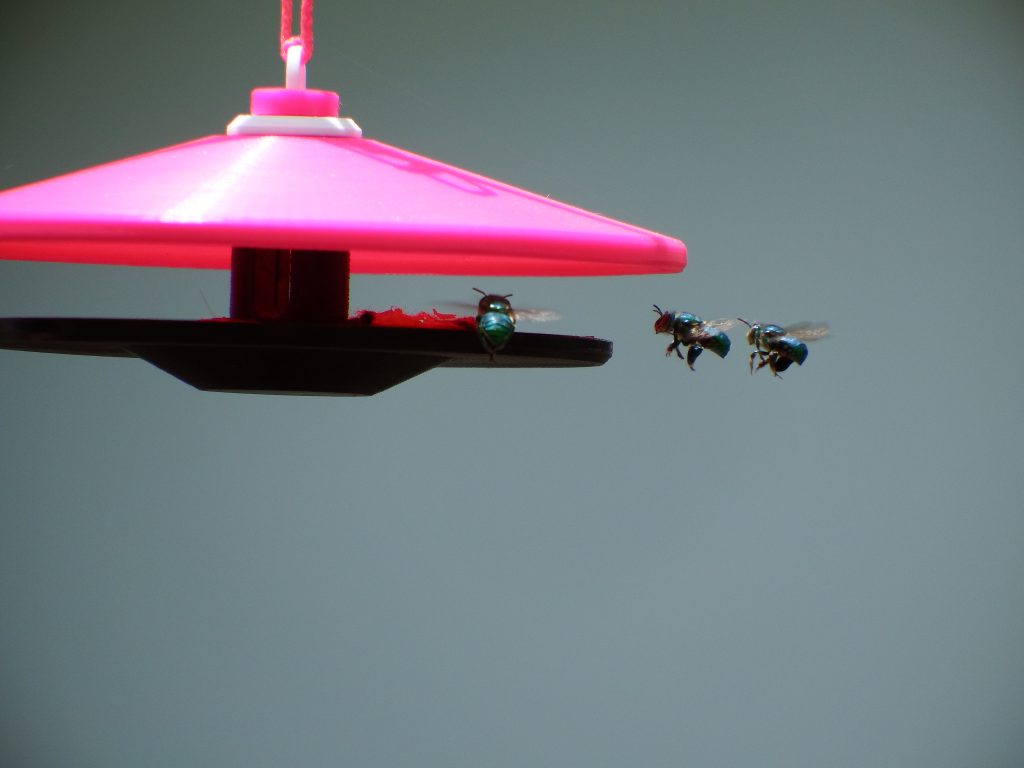
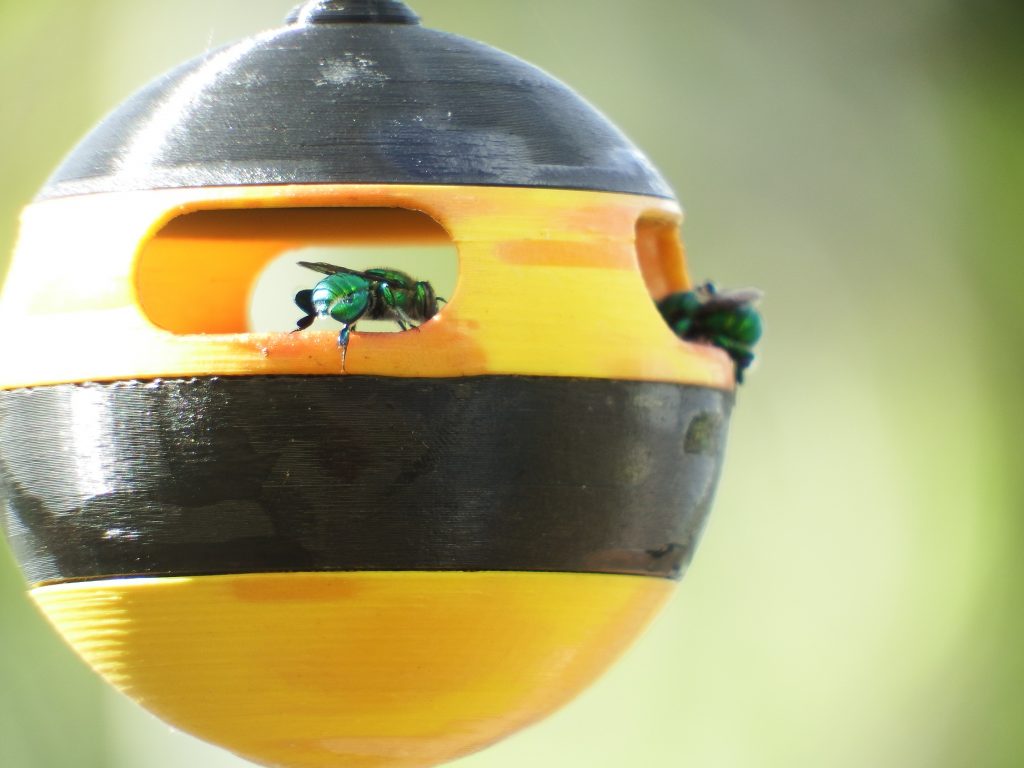
12) GO…SUPPORT YOUR LOCAL BEEKEEPER purchase honey from local beekeepers etc. rather than supermarkets. Ask them questions about their bees – we LOVE to talk about them! (if you hadn’t already noticed)
13) GO…. GET INVOLVED! …..Join a beekeeping association: www.palmbeachbeekeepers.org They meet once per month and have fees of only $25.00 per year. The meetings are packed with information and there are many lifelong beekeepers and mentors at the meetings. This is a great way to get introduced to bees, find out what it’s like in a bee suit inspecting bee hives. Team up and offer help to beekeepers – the best way to get hands on experience without committing to getting bees. Try it before you buy it!
14) GO… BECOME A BEEKEEPER. Always a fantastic option and the best thing I ever did!
15) GO…. EDUCATE PEOPLE– try to spread the word as much as you can, about how important bees are to us and how we need to look after them – especially talk to children – they’re our future and the bees’ future!
16) GO….Attend my presentations in south Florida: I give many presentations about honey bees and I also give presentations about what it’s actually like keeping bees, the pros, the cons, what to expect. What to expect when you’re expecting BEES! and “Is beekeeping right for you?” Take an online course like BEEKEEPINGMADESIMPLE.COM (use my name to get a discount). Look at my EVENTS page – click on this LINK https://weloveourbees.com/events-calendar/
17) GO…. volunteer some LAND!! DO YOU HAVE A LOT OF LAND? Talk to local beekeepers or bee removal specialists and see if they want to install beehives on your land, that they will manage and care for.
18) If you’re a little nervous about honey bees, you can help other bees by buying an Insect hotel or Bee hotel! Visit https://crownbees.com/ for more information – they are FANTASTIC! They will guide you in how to help our solitary bees – also great pollinators.
19) If you have outside lights on at night and find bees buzzing around them, either turn them off OR REPLACE THE BULBS WITH RED BULBS! Bees don’t see the color red, so by putting red bulbs in outside, they won’t be disturbed at all and you won’t see them clustering around your outside lights. Bees fly towards white and yellow light, so this is one of the best solutions.
20) ENCOURAGE LIVE REMOVALS!!! If you know someone in south Florida who has a bee problem, contact BRIAN SCHAFER at 954 612 3662 (email BrianSchafer1@aol.com). I’ve known Brian for a few years now and he is THE most amazing bee removal specialist with a specialty of removing Africanized (or African-derived) bees. I have assisted him a few times (as part of my Master Beekeeping certification), watched him do trap-outs, cut-outs, swarm removal and all sorts of things – and he truly is a hero and a master at removing bees. I also recently became aware of someone else who does removals, although I have not worked with him on any removals – but I hear great things about him too! Jake Dudas from Dudas Farms (813) 777-3880.
21) VOLUNTEER SOME LAND! Do you have a lot of land and wish you had bees? Talk to a local beekeeper (a lot of us are limited by space and can’t have more than a few hives on our properties) – see if they want to install and manage beehives on your land that they will manage and care for – it’s a win win win situation.
22) DON’T PANIC – if you see a swarm in a tree that’s just arrived, don’t panic. It may LOOK intimidating and scary to see this ball of bees hanging from a branch in a tree (or elsewhere on your property) but in truth, they are at their most docile in this state and are just needing a temporary “hang out” spot to chill while their realtor bees go out and find a new home for them. They may be there an hour, a day, or even a few days – but most likely, as soon as they have found a new home, they will simply up and leave! DO NOT EXTERMINATE THEM. Do not try to remove them on your own, as that can cause a dangerous situation – only KNOWLEDGEABLE AND EXPERIENCE BEE REMOVAL PEOPLE OR BEEKEEPERS SHOULD ATTEMPT ANY KIND OF REMOVAL – and if they’re still there after a long time and you want them removed, please call or text Brian at 954 612 3662, and if you can send him a photo of your bees and describe the situation, he may be able to give you an estimate over the phone.
